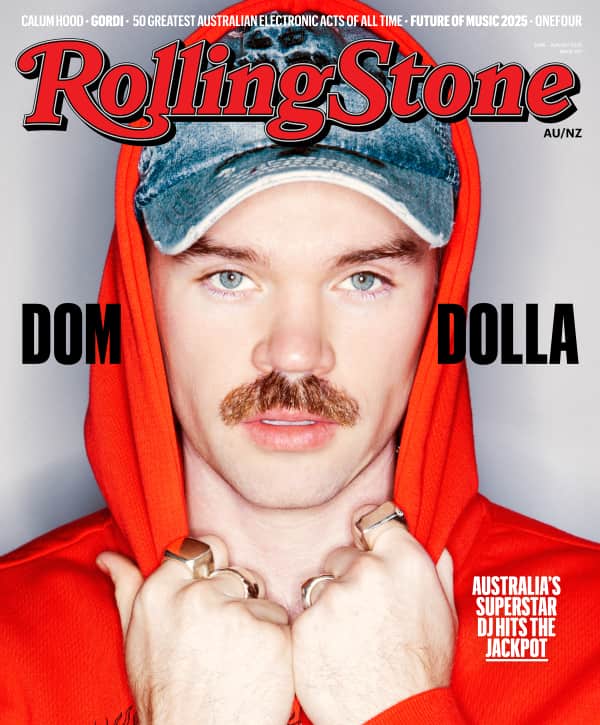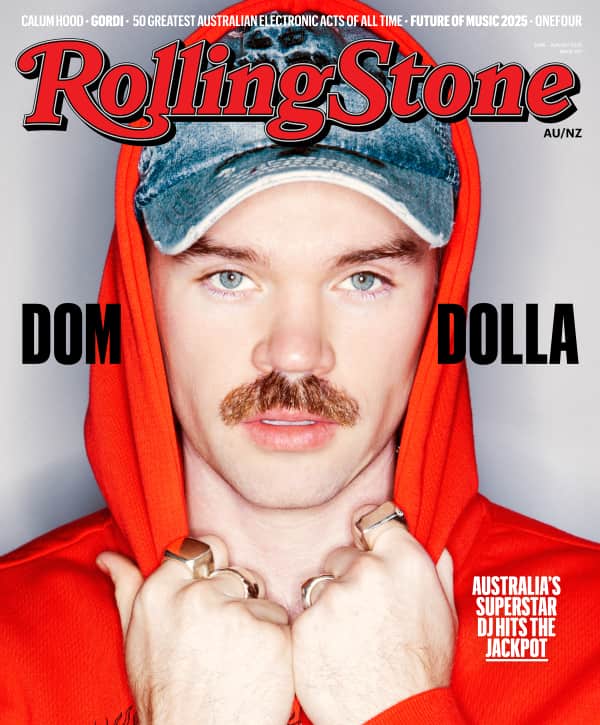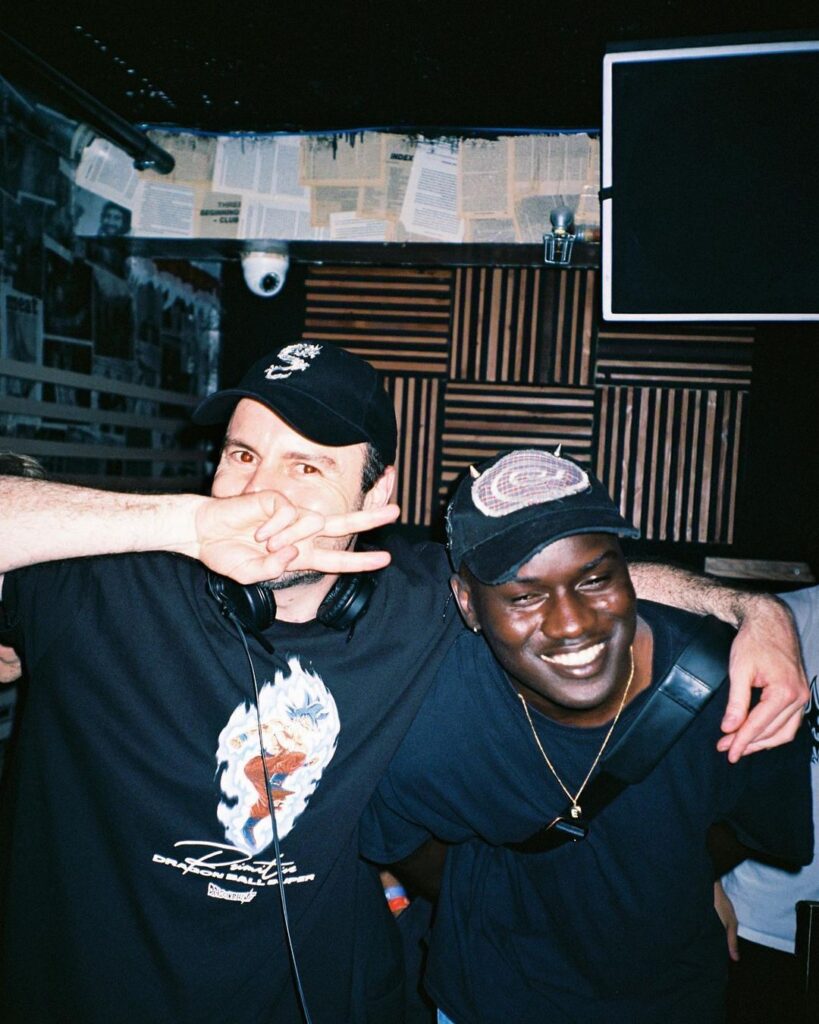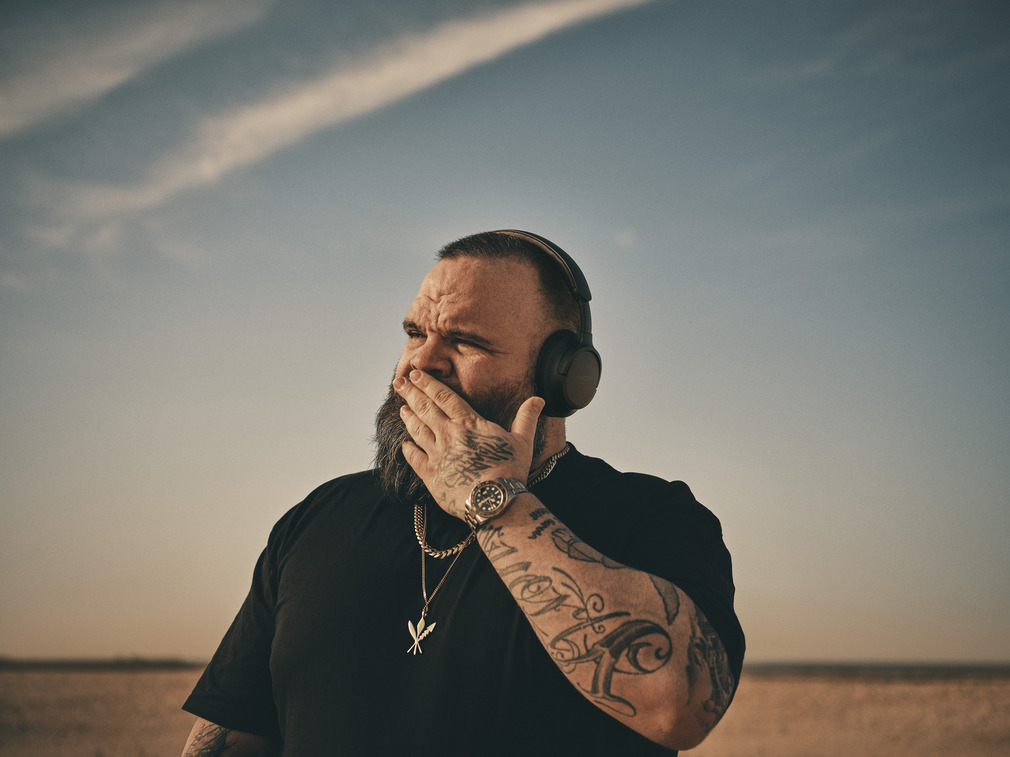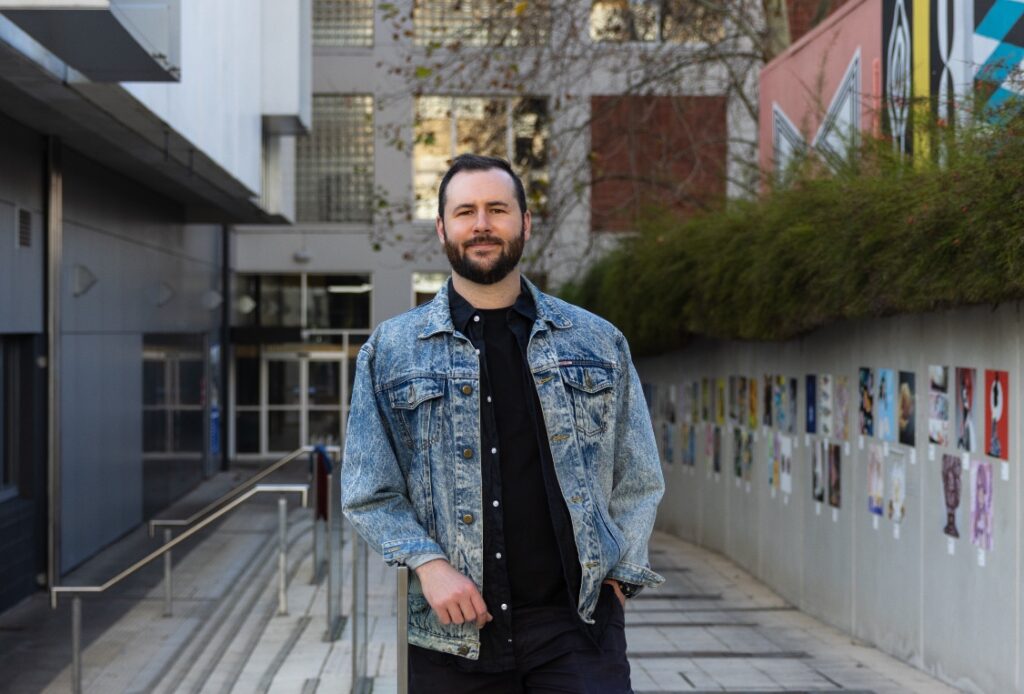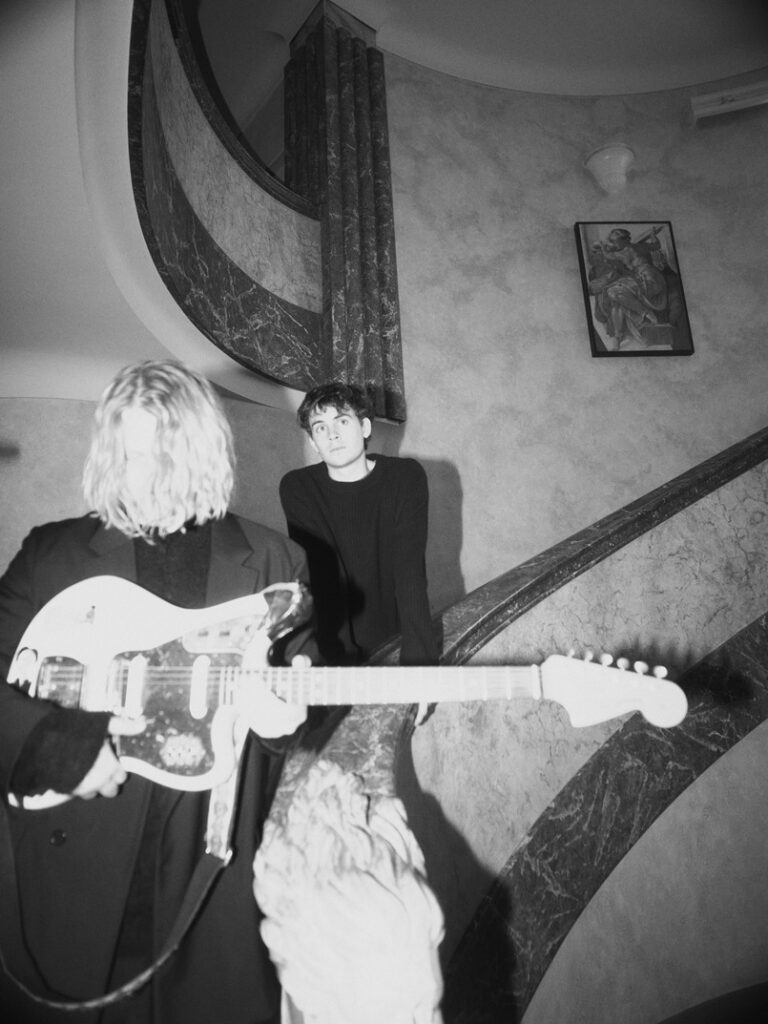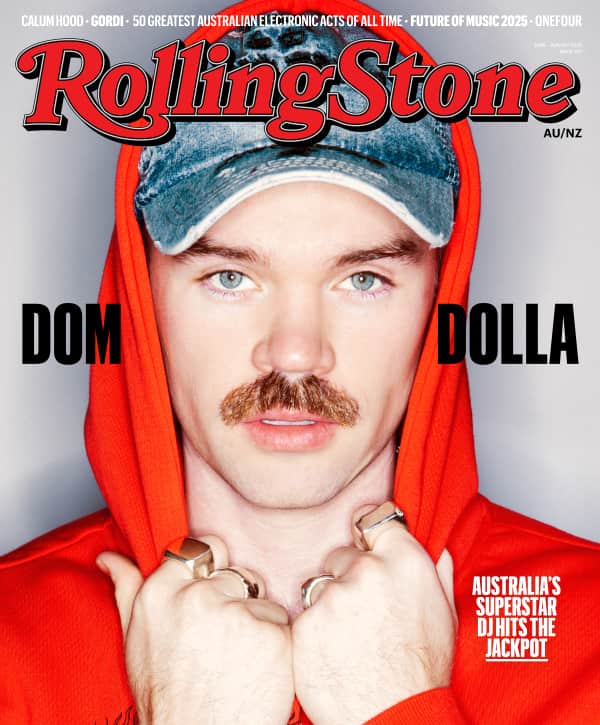Jack Fenby
Live Music Is Dead, Long Live Live Music
As Australian grassroots live music venues struggle, a very different show goes on.
The carpet is sticky, the bar staff are indifferent, and over the din of boozy chatter comes the squeal of a microphone and a few strummed chords.
Every legendary artist begins in a place like this. Once derided as the ‘toilet circuit’, these havens of music and booze have been rebranded, thankfully, as the grassroots music scene. But it won’t come as a surprise to hear that these roots are withering. And if they go, they threaten the entire music ecosystem.
Concerns about the state of live music in Australia aren’t new. In 2010, thousands marched in Melbourne to ‘Save Live Australia’s Music’. However, we seem to have reached something of a tipping point. Of the roughly 5,200 small-to-medium venues that once dotted the country, a full 1,300 have closed in the past five years — a figure that should spark panic in the heart of anyone who cares about music. Peter Garrett, in the Four Corners investigation into the scene, said that “a country without its own music is a country without its soul.” The threat, as the legendary Midnight Oil frontman sees it, is existential.
At the same time, live music appears to be thriving. Live Performance Australia (LPA) reported a historic 30.1 million tickets were sold in 2023 for a total of $3.1 billion in revenue. State and federal governments are ploughing record amounts into grants programs, including $7.7 million for Revive Live. In New South Wales alone, the lockout laws are gone, a 10-year Contemporary Music Strategy is in place, and live music spaces are up 89 per cent.
These contradictions only make sense if you understand that live music isn’t dying — it’s transforming. “We’ve been banging rocks together to make some form of music for about 50,000 years,” one promoter told us. We’re not about to stop anytime soon. Instead, what we’re seeing are the increasingly visible results of a shift that the live music industry has been undergoing for a decade or more. The question now is whether we embrace this coming reality — or resist it.
“A country without its own music is a country without its soul.” – Peter Garrett, Midnight Oil
Love Music?
Get your daily dose of everything happening in Australian/New Zealand music and globally.
“There used to be those two to three hundred cap rooms where you could do a good night of music and fill it out,” Rapper Briggs tells Rolling Stone AU/NZ. “The overheads were reasonable, you could make some money, sell some merch, sell some CDs. It was a viable thing for an artist. But those kinds of venues are a wrap. They don’t exist anymore.”
No single issue fully explains the decline of Australia’s small live music venues. Viability in this sector is affected by myriad factors and each venue’s struggles are unique. Sure, some close because rapacious developers sink their fangs into them; others fall to noise complaints made to weak councils or are sacrificed for a new train line. Yet, for most, it’s simply a question of the books failing to balance.
“It’s not one thing that crashes the plane. It’s 11 things at once,” Briggs explains.
Venue owners say the current situation is precarious, but not all of them believe it’s terminal. One operator in Canberra thought the industry is “probably due for a good weeding out.” Hobart’s Grandpoobah said recent struggles are down to cost of living pressures, but signs of improvement are there. One Sydney owner even said the city’s live music scene is the best it’s been in a decade.
Contradictions abound. “It’s nothing new in hospo,” says Alexandra Heffernan, the owner of Lazybones Lounge in Marrickville, while at the same time admitting that “the current models are unsustainable.” Tamara Boakes of Jive in Adelaide says “there have forever been cultural swings and things will change” but the scene right now is “very volatile.”
Still, most owners say they are primarily concerned with rising insurance premiums, punitive tax policies, and noise complaint legislation. “Insurance costs have nearly quadrupled post-COVID,” notes Heffernan. “Emerging venues can’t afford it.”
Changing consumer habits and a decline in alcohol consumption only add to the strain. The traditional model — artists take the door, venues take the bar — falters when patrons aren’t drinking as much.
“The venue pays the rent, the insurance, the electricity, the bar staff, tech staff, door staff, security, stock, the PA, the marketing. With no bar income, there is no way to recover these costs,” Boakes explains.
“It’s not one thing that crashes the plane. It’s 11 things at once.” – Briggs
Two venue owners perhaps best illustrate the conflicting realities of Australia’s current scene. One of them is Dane Gorrel, head of one of the most successful small live music venues in the country, Sydney’s Club 77. A sweaty cavern perfect for losing yourself amongst the writhing masses, it’s been a launchpad for some of Australia’s biggest dance acts, including The Presets and Cut Copy.
“Post-COVID, business has been great,” Gorrel says. “There was a significant increase in trade as the appetite for the night-time economy and going out in general was huge. Over time, things have stabilised and weekly trade is pretty consistent.”
Success is attributed to the club’s “loyal and regular crowd that comes week in and week out.” That regularity, Gorrel theorises, is down to a keen focus on branding, long-term strategising, and an entirely in-house production ensuring punters know exactly what kind of night they’ll get when they buy a ticket. It may also have something to do with the fact that dance music, Club 77’s primary trade, is now Australia’s most popular genre.
“Club 77 has a long and established legacy and reputation. It’s our job to honour this and keep it moving into the future,” Gorrel says.
In stark contrast, you have another owner in a different major city. They’ve been running a place hailed as one of “Australia’s best” for the past 15 years, but things are now so difficult that they’re trying to sell. We’ll call them “Alex”.
“I’m just knackered,” Alex says. “The venue pretty much breaks even, at best. That’s with me doing probably 40 hours behind the bar. I do all the cleaning, I book all the bands. Everything is on my shoulders.”
Alex hasn’t had a holiday since COVID and says they feel “trapped” in the venue. “I don’t see my kids as often as I should,” they say. “If I’m not there, the place doesn’t stay open.”
Unlike Club 77, Alex programmes live bands, many of whom the average punter hasn’t heard of, and the increasingly selective nature of audiences is taking its toll.
“Fifteen years ago, people would just come. They had no idea what they were watching. Now we are solely reliant on the artist to bring in the crowd.”
Both owners speak to similar systemic challenges. Gorrel argues that licensing red tape stifles compliant venues like his. Alex adds that the nature of renting only worsens their precarity as “we can get our marching orders at the end of our lease.”
Again, insurance is a significant burden. Club 77 pays a “ridiculous” $110,000 annually for coverage. Alex is in even more difficulty as their premium jumped from $10,000 to $44,000. Unable to swallow the increase, they’ve had to lie about their operations, bringing their premium down to $2,500, but leaving them dangerously uninsured.
“The venue breaks even, at best. That’s with me doing 40 hours behind the bar. Everything is on my shoulders.” – ‘Alex’
Many small venues are held together by the efforts of ‘lifers’ like Alex but systemic issues necessitating risky business decisions are not unique to Australia.
“We’re seeing the same problems at grassroots level for venues, artists and promoters, pretty much everywhere in the world,” Mark Davyds, founder of the UK’s Music Venues Trust, says.
“The cost of supporting new and developing talent simply cannot be met anymore by trying to subsidise it with the sale of alcohol and food.”
Davyds has been advocating for small venues for over a decade and has run his own, the Tunbridge Wells Forum, for the past 30 years. In that time, the economic balance has shifted.
“When I first started out doing this, I just promoted shows. I didn’t even have a bar. You could make a living doing that. About 20 years ago, that picture changed. You had to have the bar or you’d be losing money. Now that picture has changed again. Even with the bar, you cannot afford to make this work. Whatever you do, you are on the bread line trying to cover your costs.”
This is partly due to inflation. A 2022 Australia Institute report found that wage growth is the slowest it’s been since the 1940s and has been outpaced by inflation for over a decade. As such, costs for venue owners have risen, but the ability to cover them has not.
“This is not about a lack of enthusiasm for live music. We’ve never sold more live music tickets worldwide than we [have] in 2024,” Davyds says.
He’s not wrong, but the sales figures mask the issue. Post-pandemic, ticket-buying behaviour has shifted. People are purchasing closer to the event, creating uncertainty for promoters. While sales are up in general, young people are attending fewer gigs as they’ve been hit hardest by the cost of living crisis and have become accustomed to entertaining themselves at home following the lockdowns. In addition, ticket prices have soared from $87.01 in 2022 to $128.21 in 2023. The LPA puts this down to “major international acts with higher ticket prices and increased operating costs across the live performance industry.” Therefore, overall spend is up, but much of it is flowing to high-profile, commercial events.
Local venues are now left with few options. Raising ticket prices risks driving audiences away. Taking a cut from artists or their merch sales puts further pressure on them and limits who can play. Diversifying into food isn’t always an option and isn’t guaranteed to cover the gaps. Grants can help but they are competitive, tedious to apply for, and unreliable year on year.
“It’s an aggressively capitalist market we’re working in,” Davyds said. “Is it sustainable? No. It’s not going to function.”
“It’s an aggressively capitalist market we’re working in. IIs it sustainable? No. It’s not going to function.” – Mark Davyds, Music Venues Trust founder
Of course, there is still money to be made in live music. A lot of money. Taylor Swift’s historic Eras Tour raked in over a billion USD, $135.6 million of which was made in Australia. TEG Live, the nation’s biggest touring company, has an estimated annual revenue of $207.2 million, while Frontier Touring is thought to bring in $17.7 million. Live Nation garnered $34 billion globally in 2023. The issue is that very little of this money is going where it needs to.
“Australian music needs protecting,” Dr Sam Whiting, live music economy expert at RMIT, tells us. “Globalisation is the big thing no one’s talking about. This is all the result of 20 to 30 years of the global market economy, and that includes entertainment and music.”
Whiting defines globalisation here as a “deregulated market wherein big overseas multinationals, or northern hemisphere artists, dominate,” leaving little room for homegrown talent.
Creative Australia’s April 2023 Pulse Check survey found that cash-strapped audiences are saving their money for big name shows, splurging once or twice a year on a big artist rather than spending consistently at their local. The influx of foreign musical imports and the companies organising their shows are increasingly pitting small venues against the big dogs.
Governments aren’t helping either, Whiting argues, when they treat live music as a form of economic stimulus. Subsidising international acts or festivals headlined by foreign talent in the hope of creaming off the top of a visitor spending frenzy means draining selectively spent income from grassroots venues.
Live Nation, the world’s biggest promotion company, has become something of a figurehead for this economic imbalance. They themselves received tens of millions in grants from Australian governments, while Four Corners concluded that the American giant is “tearing the scene apart.” Live Nation disputed ABC’s claims, noting their competitors in Australia operate in similar ways, but the core issue remains consolidation.
“[These groups are] buying up merchandise companies, artist agencies, booking agencies, and promoters,” Whiting explains. “That’s squeezing independent operators and smaller venues. They can’t compete with those multinationals and their economies of scale.”
As smaller venues fold, punters will be left with little option but to shell out for big acts in big arenas for the benefit of a few big companies. Whiting argues these are not passive economic trends we’re witnessing, but rather a concerted effort to turn live music into a “luxury product.” This is the aim of that transformation.
“People are still going to go and see their favourite artists,” Whiting says, “but the idea is to extract as much value from that as possible.”
“People are still going to go and see their favourite artists, but the idea is to extract as much value from that as possible.” – Dr Sam Whiting, live music economy expert at RMIT
While venue owners struggle, those playing their stages warn of a collapse in the music pipeline if the stepping stones between the bedroom and the arena disappear.
Sydney band The Buoys tell Rolling Stone AU/NZ that this increasingly sparse environment is already having an effect. Frontwoman Zoe Catterall shares the significance of Cronulla’s music scene in the band’s formation. Once centered around venues like El Sol and Space 44 gallery, “It should come as no surprise that neither venue exists anymore,” Catterall laments. “Both were demolished for high-rise apartments.”
Other artists echo this sentiment. Anna Ryan, of Teen Jesus and the Jean Teasers, says that “without them, you wouldn’t be playing stadiums and arenas. We relied on those small venues starting out. It’s crazy how many are closing.”
Otis Pavlovic of Royel Otis says the grassroots network was vital to the band’s success. “It’s created so many opportunities to travel and see the bands we toured with around Australia. It helped us just develop and be able to get better at playing live.”
Australia’s geographical challenges and sparse population only exacerbate these global problems. The lack of medium-sized venues often means artists must gamble between a bigger venue they might not be ready for, or playing it safe.
“Either way you slice it, it’s a financial loss and a few hundred tickets makes a huge difference,” says Catterall.
Briggs, who is approaching uncle status in Australian music, says the focus for artists and fans should be on supporting the scene and the next generation, whether through buying merch or playing local gigs.
“I’m trying to invigorate the scene with my record label, Bad Apples Music, and the artists that I have,” he says. “I’m doing the stuff with [tech brand] Sprout and the homegrown sound to try to bring people back home and support local artists. Small things can really help. They all add up.”
“[Small venues have] created so many opportunities to travel and develop and be able to get better at playing live.” – Otis Pavlovic of Royel Otis
One promoter told us that “Australia is going to get the culture we deserve,” highlighting the shared responsibility we all have in these cultural shifts. Encouragingly, those with the greater means do appear to be taking some action.
The Albanese government’s Revive strategy aims to boost the arts with a national cultural policy and a budget of nearly $200 million over five years. Five state and territory governments have endorsed Musicians Australia’s $250 minimum rate for performers and Sydney’s Inner West City Council has opened its town halls for free gigs, resulting in 1,100 bookings in three months.
Artists are stepping up too. Cash Savage and the Last Drinks organised a community-focused festival at Brunswick’s not-for-profit Estonian House last year in an effort to address the “broken” system. Community-driven campaigns like Save the Cranker campaign and the $3 million crowdfunded for Melbourne’s Tote have also been successful.
However, it’s clear that only systemic change will turn the tide. APRA AMCOS is pushing for a live music tax offset which they say could support 52,000 more gigs per year. Content quotas on music streaming services to raise the profile of local artists have also been floated while ‘Michael’s Rule’, in which international artists employ domestic openers, has strong support within the industry.
One initiative being touted as a potential saviour is a grassroots music levy. The idea would see $2 from every large venue ticket put into a trust and distributed to smaller venues. Davyds led the charge in the UK for such a change which is now on the cusp of being government policy.
“We want to see limited, highly achievable redistribution,” Davyds says. “It will have a huge impact.”
France has had a similar levy on all shows since 1986. The 3.5% tax funnels $50 million in support to domestic artists and venues annually. It’s a solid argument and one that the Australian industry appears to back.
Without significant changes like these, we will continue to lose small music venues. Whiting argues that we should be framing such a loss as one of national identity.
“We’re going to end up being culturally colonised by the United States. That is problematic for reasons that go far beyond supporting the next generation of talent.
“We’re a diverse, successful, multicultural nation in the South Pacific. We should celebrate that. Our horizons of imagination and possibility are only limited by the arts and culture that we consume. If that’s always going to be American content, or stuff from the northern hemisphere, then we’re not really going to know who we are. And if we don’t know who we are, we can’t know where we’re going.”
This fight began a long time ago and, right now, small venues are losing. The longer we let things slip, the worse the situation will become.
“Sometimes when things change, man, they change for the worse and it’s really, really fucking hard to change them back,” Briggs says.
To some, dancing to an unknown local band might seem like a waste of time in the grand scheme, but there are few things in life more joyous. That, alone, is worth fighting for.
“They always talk about grassroots venues as the place where the next big act comes from, but I don’t really care about that,” says Alex.
“People enjoy watching local bands that are never going to make it and don’t want to make it. That’s, you know, fun. That’s what we’re all here for. What’s wrong with supporting that?”
This live music feature is in the March-May 2025 issue of Rolling Stone AU/NZ. If you’re eager to get your hands on it, then now is the time to sign up for a subscription.
Whether you’re a fan of music, you’re a supporter of the local music scene, or you enjoy the thrill of print and long form journalism, then Rolling Stone AU/NZ is exactly what you need. Click the link below for more information regarding a magazine subscription.































